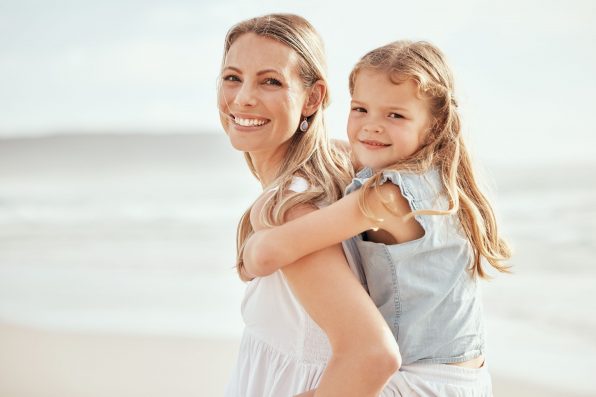How To Tell What Your Attachment Style Is And If It’s Negatively Impacting Your Relationship

As Kids, We Learn Attachment Styles From Our Primary Caregivers

C Coetzee/peopleimages.com – stock.adobe.com – illustrative purposes only, not the actual people
Many different theories help people make sense of how they form attachments and develop relationships. One such theory is Attachment Theory, developed first by psychologist John Bowlby and was expanded in the 1970s by psychologist Mary Ainsworth.
The basis of attachment theory begins in early childhood. The theory states that we learn our attachment styles from our primary caregivers. The more responsive the caregiver is to you as an infant dictates the level of security you develop.
There Are Four Different Attachment Styles

Grady Reese/peopleimages.com – stock.adobe.com- illustrative purposes only, not the actual people
This security allows you to explore the world. Between Bowlby, Ainsworth, and some researchers in the 1980s, four attachment styles were discovered.
But Many Relationships Can Alter Your Attachment Style

Studio Romantic – stock.adobe.com – illustrative purposes only, not the actual people
While these styles are usually depicted as being based on relationships with your parents, many relationships can alter your attachment style.
This can include early relationships with other family members, relationships with siblings, early friendships, and early romantic relationships.
Attachment Style #1: Secure Attachment

morrowlight – stock.adobe.com – illustrative purposes only, not the actual person
This one is the ideal attachment style. If you have a secure attachment style, you’ll notice characteristics such as:
-You feel like you can depend on your partner
-You can form healthy, long-lasting relationships
-You can give love and affection freely
-You openly express how you feel and feel safe doing so
-You can easily set boundaries without being afraid of how people will react
Attachment Style #2: Anxious Attachment

Drobot Dean – stock.adobe.com – illustrative purposes only, not the actual people
This is also called an anxious/ambivalent or anxious/preoccupied attachment style. Some characteristics of this attachment style include:
-Fear of rejection
-Fear of abandonment
-Needing your partner to validate your emotions at all times
-Struggling to tolerate uncertainty
-Always overthinking and scrutinizing aspects of the relationship stemming from insecurity
-Lacking boundaries
Attachment Style #3: Avoidant Attachment

Flamingo Images – stock.adobe.com – illustrative purposes only, not the actual people
Sometimes, this is also known as avoidant/dismissive or anxious/avoidant style. Characteristics of this insecure attachment style include:
-An inability to get emotionally close to a partner
-Commitment issues
-You don’t open up easily
-You feel others are too emotional/needy
-You don’t feel like you need people or need connection
Attachment Style #4: Disorganized Attachment

nemanjanovakovic – stock.adobe.com – illustrative purposes only, not the actual people
This style is defined by an inability to show consistent behavior. People with disorganized attachments are unpredictable and often contradict themselves with their words and actions. Some of the characteristics of this attachment style include:
-A combination of anxious and avoidant attachment style
-A tendency to do the push/pull method – wanting love but pushing a partner away when they get too close
-Difficulty trusting people
-They behave chaotically because they see their partner as unpredictable
-Difficulty regulating their emotions
How Do You Know If Your Attachment Style Is Negatively Impacting Your Relationship?

BullRun – stock.adobe.com – illustrative purposes only, not the actual people
So now that we have a working knowledge of the attachment styles, how do you know if it’s negatively impacting your relationship?
When it comes down to it, the only person who can really know that is you.
Here Are Some Questions To Ask Yourself To Find Out

bokan – stock.adobe.com – illustrative purposes only, not the actual people
Some questions to ask yourself to figure out if your or your partner’s attachment style is negatively impacting the relationship are:
-Do you know why you or your partner reacts to situations in a specific way?
-Do you or your partner have a fear of rejection?
-Do you or your partner have difficulty regulating emotions, particularly during a fight?
Your Biggest Question To Answer Is Which Attachment Style You And Your Partner Have

Anna Ivanovska – stock.adobe.com – illustrative purposes only, not the actual people
The biggest question for you both would be which attachment style each of you has. Once you both know your attachment style, you can truly figure out if it negatively impacts the relationship.
If one of you has a secure attachment, that makes the relationship much easier. If both of you have an insecure attachment style, the relationship is not necessarily doomed; it will just take more work to make it successful.
More About:Advice